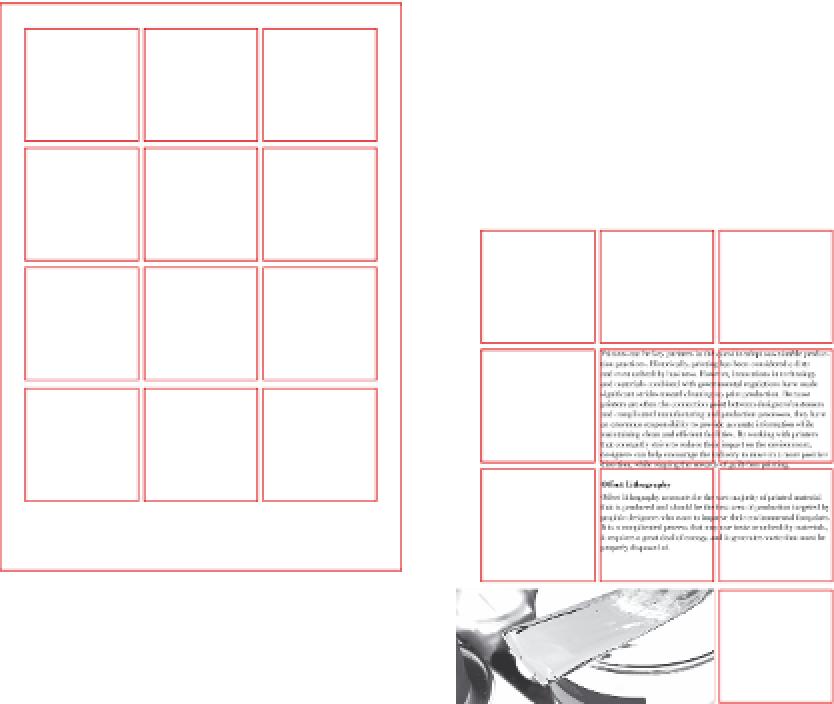Graphics Reference
In-Depth Information
Originally developed in the 1950s and
1960s by Swiss designers Karl Gerstner,
Emil Ruder, and Josef Müller-Brockmann,
modular grids are still used by contempo-
rary designers who are looking for flexible
systems in which to order content.
Modular grids are made of units of equal size with the propor-
tions decided on by the designer. Units can be squares or
rectangles.
Modular grids divide a page into equally
proportioned horizontal and vertical units.
These modules help indicate where text
and images should be placed on a page.
Room is left between modules so that
there is space for gutters if several
units are combined into a single column.
Working with a modular grid gives a
designer added flexibility because there
are numerous flow lines on which visual
elements can be aligned. Modular grids
are well suited for multipage documents
such as magazines, books, catalogs,
and annual reports.
Here, content has been applied to the modular grid. An odd
number of horizontal units makes it easier to accommodate
body text with captions and images in a composition.


















































Search WWH ::

Custom Search